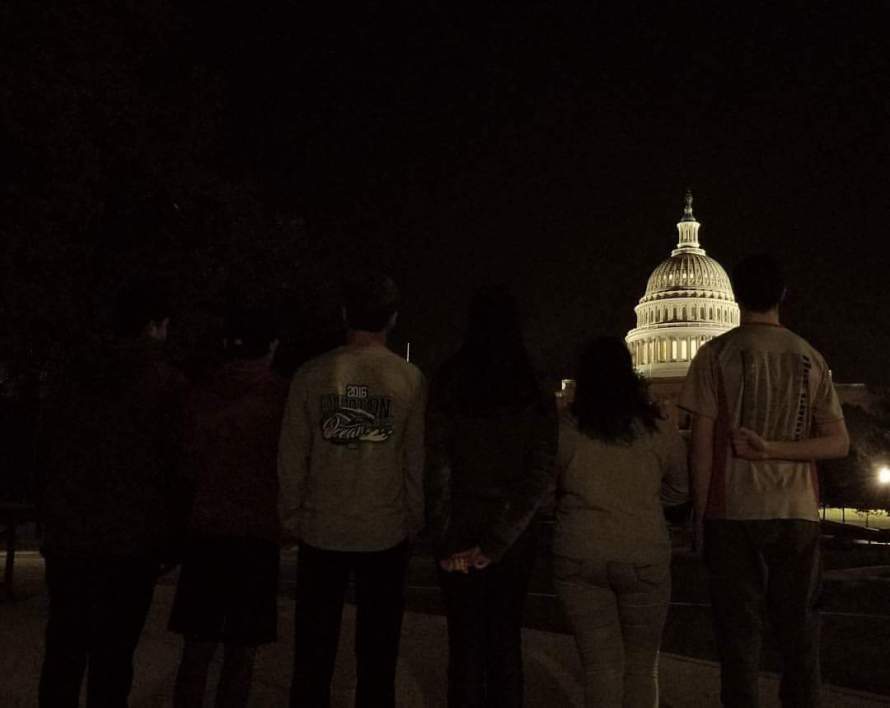But I don’t know HOW to pray!

By Rev. Jordan B. Davis (M.Div.‘14)
Congregational Corner
I have the privilege of teaching and learning with an incredible group of teenager’s who are taking part in our confirmation class this year. Some have been coming to church almost weekly since they were infants, others have only been in worship one or two times. Some seem to be fairly confident in their current place in their faith journey while others still aren’t quite sure what “faith journey” means. It is truly an incredible group of young people!
Each week, my students are expected to write in a prayer journal a minimum of three times. We have had a conversation about different ways to pray and the many different forms this journal can take. A few weeks into class, after they had time to begin the journal, I asked one of my students to pray out loud. They quietly responded, “but I don’t know how to pray.”
How many of us feel that way? We are fine on our own as we pray silently or in a journal, but when it comes time to pray in front of others it is as if we have no idea what to do. I remember feeling that way several years ago. I remember being frustrated that the prayer before our Thanksgiving dinner was handed to me once I started seminary because, as one relative said, “You know how to pray now!” I was terrified and frustrated, I feared that I would say something wrong or stumble over my words. What if my prayer wasn’t as eloquent as my Grandfather’s prayer was each year?
As my student sat there with a terrified look on their face, I encouraged them to repeat after me as I followed a model of teachers I had a young child. “Dear God, thank you for being with us in Scripture. Please be with us in the rest of class. Amen.” Simple, anything but eloquent, and honest.
Since that morning, I have been wondering the best way to help my students feel comfortable with their prayers – however short or long, simple or eloquent they might be. While on a trip to Washington D.C. this past weekend, I had each student pray for a variety things. They prayed before meals, they prayed before travel, they even prayed a variety of sites (including at our Capital building and the White House) and for a variety of people ranging from those experiencing homelessness to our government leaders. Some struggled, asking how they can pray for someone they don’t agree with or understand. Some excitedly raised their hands to pray for things they were finding an understanding for.
As I reflect on the prayers I have heard all weekend, as the prayers that I imagine were said silently, I wonder how we can encourage our parishioners to continue to pray? How can we encourage them to pray if they “don’t know how”? How can we help them pray when they don’t want to because they disagree or do not understand? A confirmation class provides a beautiful and sensible situation to learn to pray, however, not everyone is in a class which caters to this type of thing.
I encourage each of you to take a moment with those you are with during meetings, in worship, or even in the car and encourage someone else to say a prayer. Maybe the prayer will be an echo prayer as someone prays out loud for the first time or maybe just a simple, “Lord, be with them.” Maybe the prayers will be eloquent or lengthy.
I am a firm believer that communal, audible prayer offers something unlike anything else. To hear another person’s plea and to add our own voices brings us together in unity of the Spirit, in a way that nothing can break. As I tell my kids each time I see or hear hesitation, “No prayer is wrong, just say what is on your heart.”
In a time of division and frustration, I pray through shouts on the mountaintop that we might one day join all of our voices in a prayer heard around the world and that can easily begin with a simple, “Thank you, God”.
How do you teach and encourage your congregation to pray?
How do you empower individuals to pray on behalf of the community?
Alumna Jordan B. Davis is Transitional Associate Pastor at Kirk of Kildaire Presbyterian Church in Cary, North Carolina, and editor of Congregational Corner.

